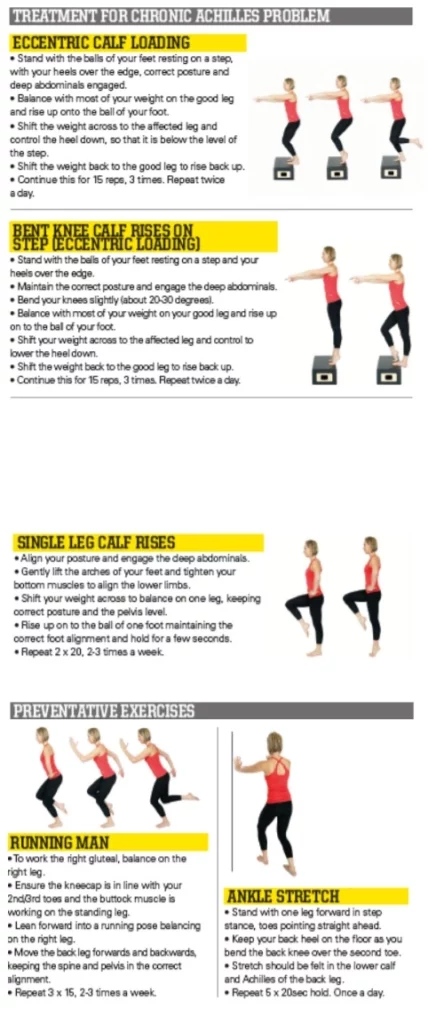Alex Hunter explains achilles tendinopathy: how to prevent and what exercises to do if suffering from a Chronic achilles problem TriathlonPlus June 2016
Achilles Tendinopathy can be a one of the most frustrating injuries for a runner or triathlete to deal with. They can drag on for years if not identified and treated properly! In our clinics we often hear the familiar story of a super sore Achilles over six months ago that has improved, but never returned to 100%. Often the Achilles feels stiff whilst warming up for a run, becomes pain free during the run, only for it to stiffen up immediately afterward. Getting out of bed every morning and hobbling around for the first ten minutes of the day is a sure sign of Achilles tendinopathy.
The Achilles is one of the largest and hardest working tendons in the body. Unfortunately tendons have a very poor blood supply and find it difficult to heal correctly after injury or overuse. The tiny collagen fibres the tendon is formed from become swollen and malaligned. Because of this impaired blood supply they don’t respond to long term rest, in fact this often makes matters worse.
When dealing with an Achilles issue it’s important to identify which stage of injury you’re in, either acute or chronic. It’s also important to identify any biomechanical issues that could contribute to the tendon being overloaded and injured in the first place.
The acute stage is immediately after the Achilles has first become painful. During this stage simple icing and rest is all it needs. We also need to avoid impact exercises and stretching the Achilles (yes this means no calf stretching for an acute injury!) This stage can last between six days and six weeks. Seeing a physio around this time is useful to give guidance around timeframes.
Once the tendon has had time to settle, we then need to go about specifically strengthening the Achilles. This involves a series of exercises known as an ‘eccentric’ programme. This essentially involves loading the calf and tendon whilst it slowly lengthens (rather than contracting like most resistance exercises). The lengthening and loading process remodels the scarred collagen fibres into healthy tendon again. An eccentric programme usually takes six weeks to have an effect and takes roughly twelve weeks to complete. The key message is that getting an Achilles right takes a lot of diligence and time.
As always prevention is better than cure! Common biomechanical issues that overload the Achilles include weak calves, core and gluteals, plus poor ankle range of movement. Tendons also become stressed out if they are subjected to too much impact too soon. So if you’re amping up your running regime make sure this is done in steady and controlled manner, with appropriate rest days from running.
Not every Achilles tendinopathy is the same unfortunately. A large percentage will respond well to eccentric exercises, but a minority are more complicated and could need further intervention, ranging from shockwave to surgery. Again it’s important to consult a physio during the rehab process to make sure you’re on the right track.

